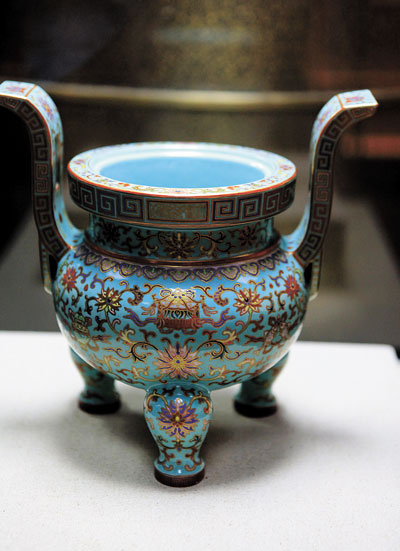
Wang Yuanyuan
cheekywang@hotmail.com
A TOTAL of 98 imperial treasures from the period of Emperor Qianlong in the Qing Dynasty (1644-1911) have been exhibited at the new Shenzhen Museum in Futian District since July 11.
The treasures were collected by Beijing Art Museum and include precious collections of calligraphy, painting, arts and crafts, clothes, accessories, furniture, household utensils and Buddha statues, to help visitors gain a comprehensive understanding and experience of imperial life during Qianlong’s reign, said Zhang Shuwei, president of the Beijing museum.
Emperor Qianlong was the fourth son of Emperor Yongzheng. Born in 1711, he became the sixth emperor of the Qing Dynasty and also is the emperor who lived for the longest time in Chinese history. He died at the age of 89.
Qianlong made significant achievements in social and economic development during his reign. He and his grandfather, Emperor Kangxi, helped lead the dynasty to its golden age.
As a major patron of the arts, Qianlong collected traditional artworks and was well-known for his own artistic talent.
Because of the fast development of the economy at the time, art styles from the Qianlong period largely reflect the luxurious lifestyles of the ruling class.
“The collections at this exhibition show Qianlong’s great political and social achievements, his pursuits in luxury and his stylish way of living,” Zhang said.
The exhibit includes a custom-made “dragon robe,” a name given to clothing worn only by emperors.
“This was a special robe worn by Qianlong when he had to attend major national events and ceremonies,” Zhang said. “The robe was very beautiful and carefully made with nine dragons. An emperor had many robes for different uses, and a robe like this was very rarely seen. It represented the highest level of fashion design and art during that period of time and has important meaning when studying history and politics of the Qing Dynasty.”
The exhibition also includes a painting of a flower by Qianlong. An outstanding artist himself, Qianlong expressed his love for his mother and the beautiful spring season through simple brush strokes. He also wrote a poem on the painting.
Other must-see items include a colored double-ear incense pot, snuff bottles with traditional Chinese landscape paintings, and vases.
Beijing Art Museum is one of the most well-known museums in Beijing. It’s located in the 400-year-old Wanshou Temple, which was a temple for holding birthday ceremonies of imperial families in the Ming (1368-1644) and Qing dynasties. Qianlong had a long and close relationship with the temple. He held three birthday ceremonies for his mother there and wrote more than 60 poems about the temple, Zhang said.
|

